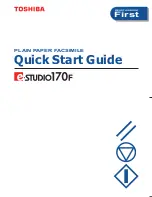
2
Sewing
53
— — — — — — — — — — — — — — — — — — — — — — — — — — — — — — — — — — — — — — — — — — — — — — — — — — — —
Securing the stitching
When sewing with the straight stitch, for example, at
the end of an opening or where seams do not
overlap, use reverse stitching or reinforcement
stitching to secure the end of the thread.
a
Lower the needle into the fabric at the
beginning of the stitching, and then lower the
presser foot lever.
b
Press
/
(Start/stop button) or press
down on the foot controller.
At this time, if
/
(Start/stop button) is
held down, the machine sews at a slow speed.
a
Start/stop button
• For details, refer to "Starting to sew" (page
51).
X
The machine starts sewing.
c
After sewing 3 to 5 stitches, press
(Reverse/reinforcement stitch button).
Keep
(Reverse/reinforcement stitch button)
held down until you reach the beginning of the
stitching.
• The machine sews at a slow speed when
(Reverse/reinforcement stitch button) is held
down.
a
Reverse/reinforcement stitch button
X
While
(Reverse/reinforcement stitch
button) is held down, reverse stitches are
sewn.
d
After sewing back to the beginning of the
stitching, release
(Reverse/reinforcement
stitch button).
X
The machine stops sewing.
e
Press
/
(Start/stop button), or press
down on the foot controller.
X
The machine starts sewing in the normal
sewing direction.
f
When the end of the stitching is reached, press
(Reverse/reinforcement stitch button).
Keep
(Reverse/reinforcement stitch button)
held down until 3 to 5 reverse stitches are
sewn.
X
While the reverse/reinforcement stitch
button is held down, reverse stitches are
sewn.
1
1
Summary of Contents for Ellure (BLR)
Page 1: ......
Page 16: ...14...
Page 48: ...GETTING READY 46...
Page 126: ...124 UTILITY STITCHES...
Page 162: ...160 EMBROIDERY...
Page 179: ...English 882 U12 XD0647 051 Printed in Taiwan...
















































